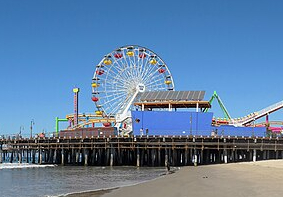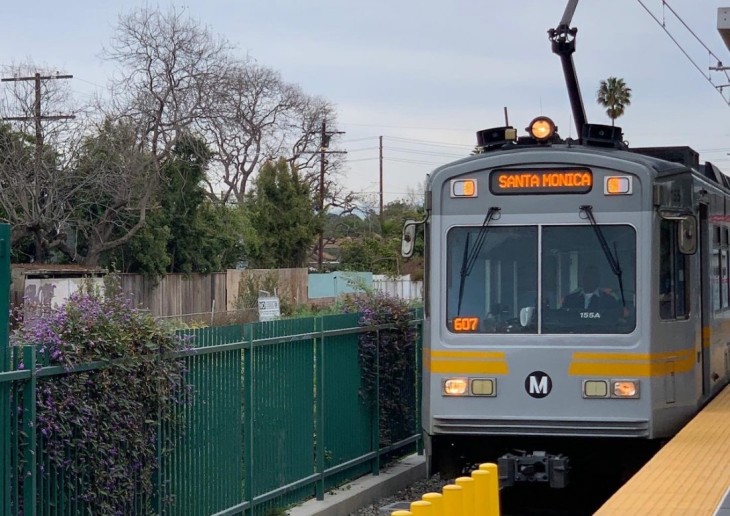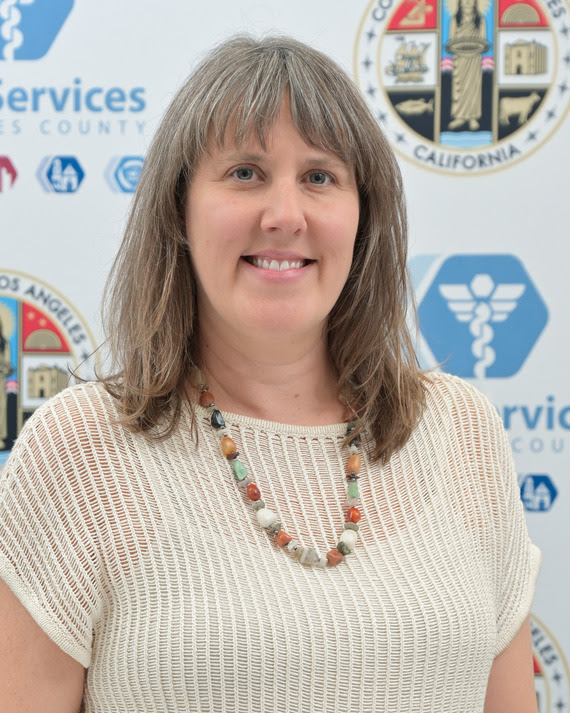Although the Santa Monica Chamber of Commerce does not endorse candidates, it works hard to provide its membership and the Santa Monica community with the best information available to aid them in selecting the candidates who understand the vital role businesses play in the city. In partnership with The Mirror, The Chamber’s Government Affairs Committee asked the following business themed questions for the candidates to answer. Responses are published in ballot order. Answers were not received by time of press from Bob Seldon, Roberto Gomez, or Terence Later.
Do you support new development in Santa Monica? If so, what amount and types are appropriate?
Terry O’Day: The city should accommodate new development that replaces affordable housing we have lost, provides services neighborhoods need, improves the street grid to improve traffic circulation, or restores historic buildings.
John C. Smith: Development must benefit the people who live and work here. It should include housing that people can afford, adequate parking, and cover the costs of the traffic it creates. Most of our police force and firefighters can’t afford to live here. If more people who work here can afford to live here, we reduce traffic.
Ted Winterer: Our land use plan calls for conserving 96 percent of our city and allowing growth downtown, on commercial corridors and near Bergamot. I support developing housing for all incomes in these areas to address our jobs-housing imbalance and reduce traffic and more hotels as they generate substantial revenues and fewer car trips compared to other commercial uses.
Shari Davis: Cities create General Plans to provide a vision of what they want to be, and Santa Monica’s LUCE will guide my decisions as a City Councilmember. I believe the LUCE is a sound plan for creating a sustainable city with a limited amount of smart growth that is transit-oriented, green, provides workforce and affordable housing and preserves neighborhoods.
Gleam Davis: Development must have a net positive impact on the City. It must adhere to the Land Use and Circulation Element and fit within the built environment. It should reflect good design and enhance the pedestrian experience. It cannot overburden the community in terms of traffic and parking and must be sustainable and provide meaningful community benefits.
Steve Duron: Unless there are compelling benefits that offset the impacts created by development, I will not support it. We have access to sunshine, wind and waves. With research, we can find unobtrusive ways to use these, transforming us from an importer of energy into a self-sustaining city and an exporter of energy. The result: more jobs, revenue and opportunity.
Tony Vazquez: Yes, only mixed-use projects that contain housing if they have 30 percent affordable units. This is a means by which we can continue to address our jobs/housing imbalance in the city.
Frank Gruber: Yes, but we need to reduce commercial office development drastically because we overbuilt under the 1984 plan. We need housing and we can also use more hospitality industry facilities such as hotels and appropriate retail. Neither housing nor hotels and retail contribute to the immense traffic problems we have with commuters coming into the city to work.
Richard McKinnon: New development must fit the overall needs of the City, the scale and balance of our streets, and make a contribution to the architecture of the City. For example, clustering new apartments around the three new trains stations will allow us to put people near transit cutting back their needs for cars, create a base for new localized retail and create interesting streets. Development that overwhelms neighborhoods or destroys the very things that creates the mystique of Santa Monica must be avoided. LUCE focused on 4 percent of the City including the downtown core. This is therefore a useful guide to provide us with the roadmap for the future.
Jonathan Mann: I do not support new development in Santa Monica and would repeal the Land Use and Circulation Element (LUCE). I advocate a moratorium on all new development. At least until after all the present construction is completed and we can assess the impact on traffic congestion, etc. Any future development would have to be approved by the residents.
Armen Melkonians: Development should increase the quality of life in our City and never detract from it. Development must be responsible and sustainable. Through my 20 plus years of experience as a Civil/Environmental Engineer I have developed a new responsible win-win approach – netZAID – net Zero Adverse Impact Development. With netZAID guidelines, I support development.
Jerry Rubin: I do support new development that benefits Santa Monica. I was opposed to the RIFT ballot initiative, which would have put a moratorium on development, and was glad it was defeated.
With the dissolution of the City’s Redevelopment Agency, Santa Monica needs to find new sources of revenue to finance the projects it has been planning. How do you propose this be done without placing the burden on local businesses?
Terry O’Day: First, we must be efficient with what we have by value-engineering projects where possible. Second, we need to utilize a range of approaches that are appropriate to the needs and opportunities of each, including public-private partnerships, alternative project financing, and potentially bonds.
John C. Smith: Private businesses should partner with the city on projects such as the re-vitalization of the Civic Auditorium. Santa Monica High School will benefit from the passage of the $385 million school bond measure. As for businesses, they should and must bear their fair share of any burden if they want to do business here, just like everyone else.
Ted Winterer: I’m bullish on Santa Monica and believe that as the economy slowly improves the City’s fiscal health will improve significantly. But it may be necessary to cut back on some dreams just like families and businesses do when situations change. We can also explore whether the community would support a general obligation bond to finance essential projects.
Shari Davis: The Civic Center parks, Pico Library, affordable housing support, signal synchronization and Expo stations are moving forward. I support Measure ES, which will enable much of CCJUP to proceed. Public-private partnerships, bonds and other creative financings are ways to seismically upgrade the Civic Auditorium and pursue other needed projects.
Gleam Davis: The City cannot fund all the projects that redevelopment was slated to support. In the future, the City will need to consider public-private partnerships and other innovative financing alternatives that will allow projects to move forward. The City may require future development to pay for important community projects such as affordable housing.
Steve Duron: Everyone has suffered – families, businesses and the city. We must all bear the burden. I will put the onus on developers two ways: A) Any direct impact must be offset by benefits, i.e. infrastructure improvements, B) indirect impacts must be offset by contribution to a fund for other affected projects. I will engage the community to assist in prioritizing needs.
Tony Vazquez: The city is going to have to develop public-private partnerships with other financial institutions that have the mission to built affordable housing in Southern California.
Frank Gruber: The City will have to revert back to traditional means for funding capital projects, including voter-approved bond issues. Bond issues like these spread the cost burden to both businesses and residents. I also expect we will see more public/private partnerships, and partnerships with other governmental entities.
Richard McKinnon: Not all the projects that were on the City drawing board will go forward. Each individual project will have to compete for the severely limited capital funds that currently exist. Beyond that, the traditional route for financing city infrastructure is City Issued Bonds. Raising bonds is difficult in the current financial environment. The City will need to balance every single want with its ability to raise money. Residents and business share in the value of the City. They also both reap the rewards of better infrastructure. It’s fair that both share in the costs of improving infrastructure. In many cases new City projects will specifically improve the ability of business to make money or derive value from increased land value. But any projects need to be evaluated carefully and skeptically.
Jonathan Mann: Santa Monica does not need to find new sources of revenue. It already collects over half a billion dollars in revenues. Instead of starting new projects it needs to redirect funds to improve our schools and facilities for residents, especially youth and seniors. I propose this could be done without raising taxes and increasing development, by having the residents audit the budget on line and getting rid of employee perks and other wasteful spending by the city. The revenues collected should be targeted for the people who live here!
Armen Melkonians: In a recent letter to City Council the City Manager reported that “… it’s hard to say there is a financial crisis in Santa Monica.” I have reviewed the City’s Financial Status update and I agree. Something smells funny at City Hall. There is no need to raise taxes on our businesses or rush to approve development agreements that leave long term adverse impacts.
Jerry Rubin: I still hold hope that Governor Brown and California legislators will do something that could bring back redevelopment funding in some form. Too many cities are being negatively affected by this shortsighted dissolution policy. The funding responsibility will have to fall on the City, the business community, and local residents working together to think of creative new funding sources.
What are the top three items you would remove from the City’s budget?
Terry O’Day: Office rentals for city staff throughout the city. Copying costs and delivery services for meetings. Funding for groups and activities that no longer serve residents.
John C. Smith: Budget leadership requires strategic cutting, not chainsaws. Priorities are schools, children, seniors, infrastructure, public safety, and parks. You favor programs and projects that benefit the most people. The second biggest item on next year’s budget is $97 million for “non-departmental” expenditures. That 20 percent of our budget deserves scrutiny.
Ted Winterer: A) All capital improvements at Santa Monica Airport not legally required by the FAA agreement. B) Free parking for the City Council. How can council members make informed decisions on parking unless they experience the issue the same way as the public? C) Frisbees, coffee mugs and other swag. The City doesn’t need to brand itself; we all know where we live.
Shari Davis: I believe the City budget is in line with residents’ values; if cuts are needed, I will approach budget decisions based on established community priorities: public safety, resident services, livability, economic viability, education and environmental sustainability.
Gleam Davis: First, I would review all of the City’s consulting contracts and see which ones could be scaled back or eliminated. Second, I would reduce expenses through the use of technology. Third, I would look for procedural efficiencies such as the two-year budgeting cycle that the City recently adopted.
Steve Duron: Too many services and projects have already been cut. I will do all I can to refrain from removing more from the budget. Instead, I will make sure we are operating efficiently. With community input, I will analyze all possibilities for revenue growth before we remove more services and projects from the budget.
Tony Vazquez: My top item would be any expenses for the Santa Monica Airport that we do not have to do legally at this time. The second item would be any outside consulting that can be done by our own staff and the third would be to have an independent audit review of our city benefit package to see if there is any possible cost savings for the City.
Frank Gruber: The City needs to get out of expensive enterprises that are not part of the City’s mission; such as the Civic Auditorium. The City needs to stop reinventing the wheel, such as creating its own bus shelter design. Third, the City is spending far too much discretionary planning review. We should set standards, and then let developers decide whether to build.
Richard McKinnon: Any subsidization of commercial activities run by the Council for example the loss making Santa Monica Airport. Staff bonuses. Any investment in loss making activities.
Jonathan Mann: The top three items I would remove from the City’s budget would be the trim the waste by putting the police back on a five day week and cutting over time. This is a safe city and we don’t need to exclude the police association from soliciting paybacks so council members can get re-elected! Included with that would be a moratorium on hiring, wage freeze and pension plan revision for all city employees. I would close the airport and socialize the Santa Monica Pier so that all profits go into the city treasury.
Armen Melkonians: 1) Remove all subsidies to Santa Monica Airport. 2) Remove all subsidies to Santa Monica Airport. 3) Remove all subsidies to Santa Monica Airport.
Jerry Rubin: 1) Too many high paid consultants who are often unfamiliar with Santa Monica, and, instead, we could call on our many local expert residents and business leaders to volunteer their consulting time for our City via needed evaluation committees or ad hoc project task forces. 2) I would support another modest sales tax rather than cut much-needed social, educational, art or senior related programs, or City employee salaries. 3) And I would certainly get rid of any City ordinance that would prohibit the planting of a much-needed “Money Tree.”
How would you support business development given the number of regulations and costs of doing business in the City?
Terry O’Day: Appointing an ombudsperson for small business would help to cut red tape and get executive-level city staff out of that work.
John C. Smith: City Hall provides plenty of support for big businesses in Santa Monica. That’s why so many are clamoring to do business here. I’ve talked to many small business owners. I’ve heard how many are struggling. Many say they wish City Hall was more supportive of “their” businesses. I think the Council should focus more on supporting small businesses.
Ted Winterer: The City should streamline simple permits, such as those for a tenant improvement of a leased space, and otherwise ease red tape. However, we shouldn’t ignore all the City does to support business, ranging from installing dark fiber for Silicon Beach companies to investing in infrastructure which makes our City desirable for businesses and customers.
Shari Davis: We have set high standards for sustainability and progressive policies that are important to maintain; as a Councilmember, I will take a common sense, collaborative approach to the concerns of the business community, staying open-minded about possible adjustments and continuing the professionalism and accessibility of our City staff.
Gleam Davis: I promoted last year’s City Council meeting that invited local businesses to discuss their issues with the Council. I added funds to the Buy Local campaign that encourages residents to shop in Santa Monica. In the future, the City must continue to look for ways to streamline the permitting and other processes that impose high costs and delays on businesses.
Steve Duron: This is a destination city. It attracts tourists and shoppers and that is a benefit to business owners. Mindful that regulations and costs associated with doing business here benefit our residents, I will ensure that: A) the city markets the special benefits of doing business here, and B) the cost of doing business will be competitive with nearby cities.
Tony Vazquez: I think we need to do a better job of streamlining our permit process for small businesses in the city.
Frank Gruber: We need to make the rules, such as zoning, more clear and less discretionary. However, one must recognize that the best support the business community can get from the City is a city that is attractive to employees and customers, and Santa Monica has a done a good job in that department, as demonstrated by the demand by businesses to locate here.
Richard McKinnon: A business environment is sound when companies feel that customers want to come to their business. If Santa Monica’s investment in public infrastructure keeps pace with the demands on it then this will always be an attractive place to invest. We know Santa Monica is valuable; its rate of property appreciation topped LA Country and each square mile of the City is worth $3.1 billion, three times LA and Long Beach. In a slowly recovering economic environment, Santa Monica retained its appeal and has tremendous value in the eyes of people with money to invest. It is often very hard to get into the Santa Monica market but once in, a valuable and rewarding place to do business. A much flexible and open Town Hall environment for business owners and operators would be a good idea.
Jonathan Mann: I do not support additional business development in Santa Monica unless it is small businesses owned by local residents who would receive waivers from many of the regulations and other costs of doing business in the city.
Armen Melkonians: 1) Provide tax incentives for businesses that: A) Hire locally and reduce our regional traffic impact. B) Have a new “green” certified employee commute program – with no fees for certification. C) Provide net positive benefits which increase the quality of life in our community. 2) Create a pay-it-forward grant and mentoring program for start-ups.
Jerry Rubin: Regulations are certainly needed but many are over cumbersome. Our sign ordinance is just one example. I would hope we would want good businesses, large and small, to come here, so we must provide processes that allow development projects to be workable.
How would you address the growing demand for parking in the City?
Terry O’Day: Parking must be examined as a shared resource, rather as individual private property. It should be market-priced. We should invest in signage and in alternatives to driving – walking, biking, and transit. When we do this, we make more efficient use of the funds that go into parking, reduce traffic, and serve residents and businesses best.
John C. Smith: Anyone who wants to build here must provide adequate parking. “Park once” looks great on paper, but businesses haven’t carried their fair share of parking costs.The $20,000 per space fee proposal is only a partial answer. Developers should pay the true cost of the parking they require.
Ted Winterer: Downtown parking in-lieu fees should be used for real time signage at freeway off ramps and other access points to direct visitors to empty spaces so existing parking is efficiently used. And we should build park-once structures in the eastern part of Downtown that encourage visitors to get out of their cars and walk by downtown businesses.
Shari Davis: Recently enacted policies balance our parking location and pricing to meet the needs of businesses, but do not incentivize people to drive nor over-burden our residents. Integrated LUCE-based policies and practices must address traffic, circulation and parking; we should also strive to encourage walking, biking and transit options.
Gleam Davis: In downtown, we need to implement a public valet parking system that utilizes existing parking resources and build more public parking. In other areas, it is important to make sure that every new residential and commercial development has sufficient parking so that the development does not put additional pressure on scarce street parking resources.
Steve Duron: I will do the following: Create a Commission dedicated to parking and traffic issues; Grant incentives to employers who hire residents, and have staff use public parking lots and public transportation; and, Require that new developments include sufficient parking for residents and promote the use of alternative transportation.
Tony Vazquez: I think we need to come up with more incentives to get people out of their cars so we can cut down on the demand for more parking spaces in the city. We should also look at building large parking structures at the east end of the city where outsiders can leave their cars all day and move around the city on bus shuttles all over the down town area.
Frank Gruber: I support the City’s current efforts to rationalize the pricing of parking to increase the efficiency of the parking we have (and the new parking we are building). Parking is not something you get more of by giving it away. If we charge more for parking, then that will encourage property owners who have under-used parking to make it available to the public.
Richard McKinnon: Discourage the demand and use the existing parking better. Plenty of parking already exists in the City to handle our needs. It is in both public and private hands. It is badly used and inappropriately priced. A series of studies has shown that retail employees clog up downtown garages during the day using up the “free parking” while potential customers circle the garages fruitlessly looking for somewhere to leave their cars. In other neighborhoods, employees move cars every two hours on the street.
Parking cost capital and is an example of opportunity forgone. Parking also requires the City raise cash often through taxes and charges, which clearly is not in business interests.
Jonathan Mann: The city needs to reduce, rather than increase, parking demand in the city. It should stop building parking structures near downtown Santa Monica. Any new structures should be built where the present airport is located on the eastern boundary of Santa Monica. Reducing traffic will also reduce parking. Free loaner bicycles and free buses are incentives to get people out of their cars.
Armen Melkonians: My real world experience as a civil engineer has taught me: the only way to reduce the growing demand for parking is to get people out of their cars – not by building more parking or increasing ticket fees. A 25¢ fare Blue Bus Dash program with 2-3 routes running around town regularly every 5-10 minutes would go a long way. Tie this program to the Metro in 2015 – wow!
Jerry Rubin: We do need parking, but what we really need is a long-overdue Citywide educational outreach campaign that extols the benefits of driving a bit less and taking the Big Blue Bus a bit more.
Do you believe that City Council should negotiate living wage provisions in development agreements?
Terry O’Day: The city has a living wage for all city business. Since a development agreement is a direct contract with a property owner, it should not be different. In theory, businesses should pay fair wages to workers and the city should not have anything to do with it, but sometimes the city has to protect workers and neighboring businesses from unfair competition.
John C. Smith: Companies who pay better wages tend to retain better employees who work harder for the company. “Developer agreements” are too common in Santa Monica and should be the exception, rather than the rule. If a developer does not want to pay employees a livable wage, perhaps that is not the kind of developer we want doing business in Santa Monica.
Ted Winterer: I believe that when a development agreement allows a project additional height and floor area beyond the “by rights” zoning, that public subsidy of air rights requires a project to provide community benefits. That can include negotiating a living wage. Such a wage can allow employees to afford to live in Santa Monica and reduce commuter car trips.
Shari Davis: I believe in using creative, open-minded approaches in which project proponents work with staff, Planning Commission, neighbors, and the community to establish Development Agreements that adequately reflect appropriate types of benefits for the specific project, which may include living wage provisions.
Gleam Davis: Because new hotels argue that they uniquely contribute to the City’s revenues through the bed tax, the City should ask that these revenues not be earned on the backs of low-wage workers. If a proposed hotel does not have a union neutrality agreement in place, I think the council is justified in imposing a living wage requirement on new hotel developments.
Steve Duron: Yes, I do. In 2000, 77 percent of Santa Monicans voted and agreed that living wage provisions were the right thing to do. The city was cognizant of small business owners and, in 2001, had it apply only to businesses in specific locations grossing $5 million annually. I will place similar conditions on future negotiations to assist small business growth.
Tony Vazquez: Yes.
Frank Gruber: Yes, in DA’s for projects that historically pay low wages, such as hotels. The costs to taxpayers for providing affordable housing, health coverage, and other social services to the “working poor” justify requiring the payment of higher wages when the City is being asked to approve new developments. Workers deserve to be able to support themselves.
Richard McKinnon: Yes.
Jonathan Mann: I believe the City Council should advocate living wage provisions, and health benefits for all workers, not just for those hired by developers. I would reduce the overblown bureaucracy by getting rid of excess employees who are not necessary. Any future hiring should be limited to people who live in Santa Monica.
Armen Melkonians: Undoubtedly the living wage in Santa Monica is higher than the min wage; however no guarantee can be made that a living wage provision will attract local employees. Instead of living wage provisions I would focus on local hiring provisions.This will allow market forces to adjust wages to meet local hiring requirements as well as alleviating traffic.
Jerry Rubin: I’m glad that many of our best hotels are union hotels. I believe workers deserve a decent living wage and health care. I think that fair living wage negotiated agreements actually benefit everyone, including our City as a whole, so to an extent our City Council should be involved.
On Aug. 28, City Council held a study session on a proposed Transportation Impact Fee. What is your position on the use of development impact fees?
Terry O’Day: The fees should take us toward a future of reduced traffic demand, improved management of parking and services, and a safe city for walking and biking.
John C. Smith: I support it. Developers should pay the true cost of the traffic their projects cause. Why should taxpayers pay for improvements the project created the need for? Santa Monica can and should grow responsibly. That growth must benefit the people who live and work here. We can grow steady and strong, but we must grow more gracefully – like a redwood.
Ted Winterer: As a Planning Commissioner I voted along with all my colleagues in favor of a Transportation Impact fee, a charge on development to offset new car trips. It’s similar to the fee imposed for many years by neighboring communities. It would raise $60 million for traffic light synchronization and other measure to make traffic flow rather than clog our streets.
Shari Davis: While some adjustments to the recent proposal may be needed, the fees are in the best interest of existing and new businesses who want their customers and employees to be able to get around town. Impact fees are among the community-identified means for addressing infrastructure and mitigation strategies to make the city’s circulation more effective.
Gleam Davis: Developers must pay the costs of mitigating development impacts. With regard to the Transportation Impact Fee and other development fees, we need to make sure that they encourage desirable behaviors and do not have unintended consequences (such as discouraging conversion of office space to retail space).
Steve Duron: Unless there are compelling benefits that offset the impacts created by development upon our community, I will not support it.
Any direct impact must be offset by benefits, i.e. infrastructure improvements. As for indirect impacts, these must be offset by contribution to a fund for other affected projects.
Tony Vazquez: I believe we should use development fees to cover the cost of traffic impacts that major developments have on our city streets like addition new car trips. These fees can be used to cover the cost of traffic light synchronization and other traffic measures to make traffic flow smoother.
Frank Gruber: My view is that transportation impact fees on commercial (not residential) development can be appropriate, but in that case I would study whether the minimum parking requirements, which are expensive, should be reduced. Other than that, I am waiting to see the results of the studies that staff is coming back to the council with.
Richard McKinnon: I voted for the fee in the Planning Commission. I support the idea that development should help pay for the disruption that it causes. Traffic in Santa Monica has to be reduced. It will require innovative solutions and different directions. It is useless to keep building more garages and wonder why cars keep coming to the area. Hence we need new idea and directions and the TIF will provide this. Most business owners will be a major beneficiary of the changes.
Clearly no one wants to pay more to operate a business so resistance or dislike of a new charge is understandable. But the overall value of the TIF is high to the City and hence the value of businesses here its important to implement it.
Jonathan Mann: I support a Transportation Impact Fee only if it benefits the resident and reduces traffic. I also support much higher development impact fees which should also be used to benefit the residents. I would restrict anyone working for the city, public agencies, contractors, or anyone with a vested interest, from contributing or endorsing political candidates.
Armen Melkonians: Development transportation impact fees are not the answer and won’t work. You can not alleviate long term traffic impacts of new development through one time fees. A netZAID (net Zero Adverse Impact Development) policy approach to development however can mitigate any adverse long term impacts of development on traffic and increase our quality of life.
Jerry Rubin: They should not hurt smaller businesses. But since traffic seems to be one of our most important City challenges, fair and needed Transportation Impact Fees are extremely important.


























